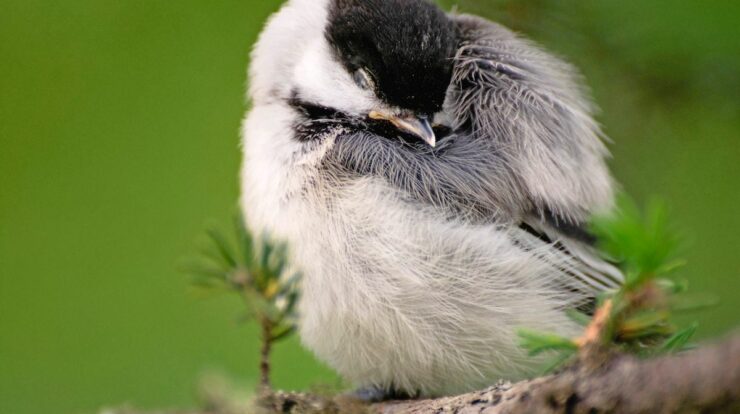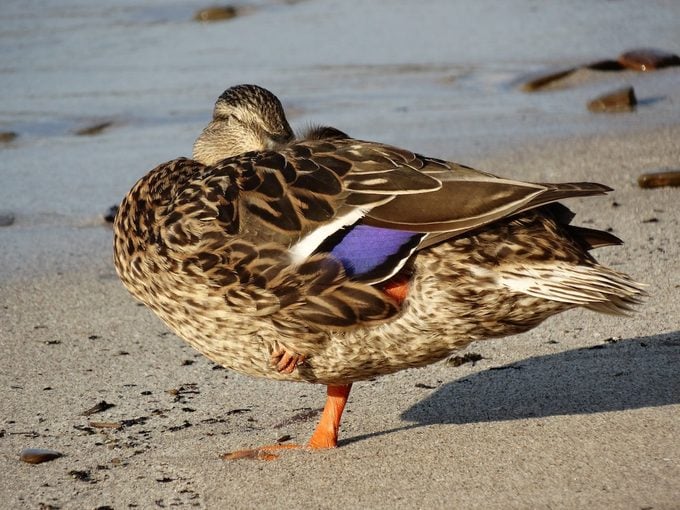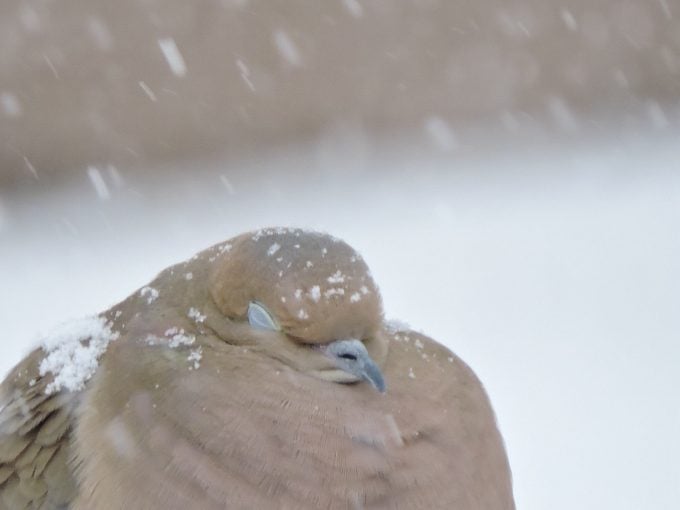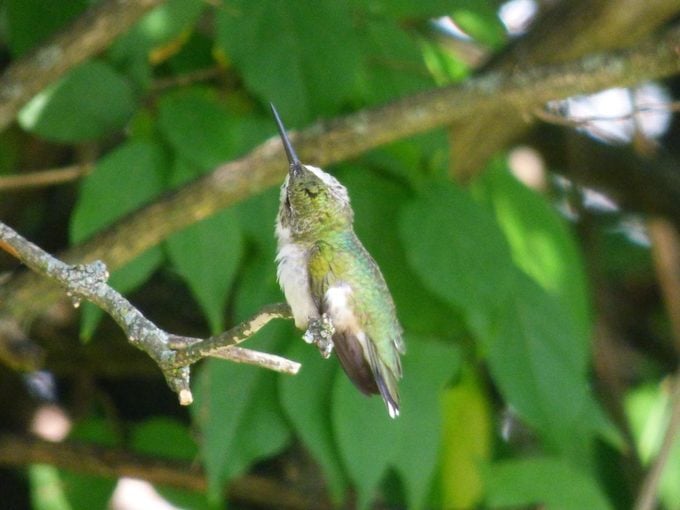
Where Do Flying Creatures Rest at Night?
Wild birds are good at finding shelter, according to birding experts Kenn and Kimberly Kaufman. Those that raise their young inside
holes in trees
, such as woodpeckers and bluebirds, often sleep in such cavities at night, at all times of year. Other kinds of birds find protected spots inside dense foliage in trees, shrubs or vines. They may perch close to the trunk on the downwind side.
Birds residing in open fields or shorelines might just stay put wherever they are, positioning themselves against the wind direction.
stormy weather
birds usually go to the kinds of spots where they sleep at night, or make an extra effort to find an even more sheltered place.
Nocturnal fliers like whip-poor-wills and owls are just getting going
when the sun sets
But where do diurnal birds roost at night? Many seek out hidden spots for their slumber; nonetheless, sleeping in the bird kingdom differs from how we rest.
Do Birds Take Naps?

Instead of getting prolonged sleep at night, birds often take hundreds of short snoozes each day. In a variety of instances, birds are never really asleep—at least not in the way that people think. Half of a bird’s brain stays active while it is resting, all thanks to the phenomenon of unihemispheric slow-wave sleep. Remaining partially alert can help birds detect potential predators and adjust to changing environmental conditions.
Some birds even nap while flying. Magnificent frigatebirds, for example, sleep up to 12 hours per day when on land, but they are limited to less than an hour of rest per day when taking long cruises over the ocean, typically while they’re riding warm air currents.
Niels Rattenborg and his team reveal in Nature Communications that frigatebirds maintain the eye linked to their wakeful hemisphere facing forward in the direction they’re flying. It truly adds a new dimension to being thoughtful on the go!
How Do Sleeping Birds Stay Warm?

Maintaining warmth
is a challenge for sleeping birds at night. Feathers provide strong insulation, so birds tuck into themselves. As they snooze, ducks, geese and swans are often seen with their bills buried in their own feathers. Many species will also pull a leg up into their cozy little zones.
Birds seldom utilize their nests for nighttime rest unless they are either incubating eggs or caring for chicks. A limited number of species that create holes in trees, such as nuthatches, wrens, and chickadees, might inhabit birdhouses consistently throughout the year. Species including acorn woodpeckers, bluebirds, pygmy nuthatches, and tree swallows have been observed collectively roosting; these birds share communal spaces within single cavities often in small clusters.
Birds Perch While Sleeping

The vast majority of
songbirds
Are naturally perched. This remains accurate even when they slumber during the nighttime. Attribute this to a bird’s anatomy: In order to support their body mass, birds will unconsciously stiffen their tendons and grip their feet around a branch.
Hummingbirds are the premier dozers
Under extreme circumstances, they’ve been observed hanging upside down, similar to bats.
cold spells
, hummingbirds reduce their metabolic rate and body temperature, entering a nightly state referred to as
torpor
, which nearly mirrors hibernation in other creatures.
Do Sleeping Birds Dream—or Grumble?
As they slumber, it remains uncertain whether birds have dreams, even though they may go through periods of rapid eye movement. Studies conducted on zebra finches indicate that the brain cells linked to singing can become active during their sleep. However, this activation might just be a mechanism for strengthening what they learned about songs rather than evidence of actual dreaming.
Regarding the topic of snoring,
Birds & Blooms
Reader Mae Miller reached out with this query: “Do birds snore? When I listen to the sounds of birds outside my window, I’m curious whether what I am hearing could be considered as snoring.”
Kenn and Kimberly responded, “That’s an interesting question! Snoring isn’t normal behavior for most birds, although it’s reported that some large birds sometimes make audible sounds of breathing when they’re asleep. In general, birds are silent when they’re sleeping. Birds that roost together in large flocks, like starlings or blackbirds, may be somewhat noisy all night, but we assume that those are individuals waking up momentarily, calling out, and then going back to sleep. But that doesn’t usually happen when it’s just a few birds. So we’re not sure what you’re hearing outside your window. Could it be some other kind of creature? Some crickets, frogs, toads, etc., have very birdlike voices.”
Why Do Birds Sing at Night?

Hearing the
cheerup cheerio
song of an
American robin
After dark appears misplaced. Nevertheless, robins, mockingbirds, and numerous other birds that thrive during the day can be seen.
shout out melodies after dark
For these reasons, which mirror those observed during daylight hours, they aim to assert their territorial boundaries and allure potential partners.
Human-generated noise decreases during the night, allowing bird songs to be more prominent. Studies conducted have shown this phenomenon.
European robins
In city environments, for instance, it indicated that nighttime was the peak period for singing.
Do Birds Rest in Their Nests?
Kenn and Kimberly state, “For the majority of birds, the nest serves merely as a nursery for their eggs and hatchlings, utilized solely until the fledglings are capable of flight. Larger species like eagles might
reuse the same nest
Year after year, some species of songbirds may choose to restore and reuse an old nest; however, it is far more common for these birds to construct a brand-new nest each time they have offspring.
Birds that nest in holes, such as woodpeckers and bluebirds, may sleep inside the cavity during all seasons. However, the majority of bird species simply sleep in sheltered spots in trees or shrubs, or on the ground or open water, and they have no need for a nest to roost.”
Next, learn
how bugs, moths and butterflies hibernate
.
About the Experts
Kenn and Kimberly Kaufman
are the official birding experts for
Birds & Blooms
and the creators of the Kaufman Field Guide series. They speak and lead birding trips all over the world.
Sources
- https://www.nature.com/articles/ncomms12468
-
- https://www.ncbi.nlm.nih.gov/pmc/articles/PMC2390663/
- https://www.birdwatchingdaily.com






